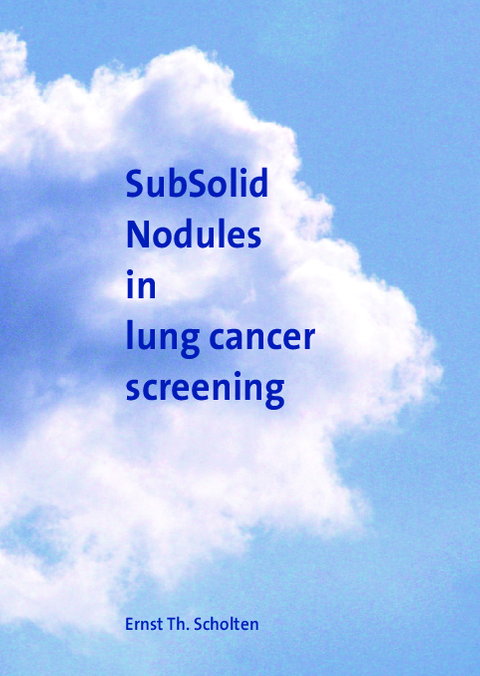SubSolid Nodules in lung cancer screening
E. Scholten
- Copromotor: P. de Jong and H. Gietema
- Graduation year: 2014
Abstract
With eight million deaths in 2012 lung cancer is the most common cause of cancer death in the world, and the problem is still growing. As long as the goal of a total ban on smoking tobacco is not fulfilled, lung cancer screening as a means of secondary prevention has great potential. The aim of lung cancer screening is the detection of lung cancer in an early and hopefully curable stage resulting in a significant reduction in lung cancer deaths in the population. The Dutch Belgium lung cancer screening trial (NELSON), that included 15822 participants is the largest in Europe. The results of this trial, aiming at a reduction of the lung cancer mortality rate of 20%, are expected in 2015 or 2016. This thesis focuses on SubSolid Nodules (SSNs), a special kind of nodules that pose a growing problem in lung cancer screening. SubSolid Nodules are also referred to as Ground Glass Opacities (GGO) or Ground Glass Nodules (GGN). In this term ground glass is defined as a circumscribed area of increased lung attenuation with preservation of the bronchial and vascular margins. The problems with SSNs compared to solid nodules are in part inherent to the appearance of the nodules: SSNs are less dense and less well circumscript and thus not only harder to see on the image but also more difficult to measure accurately compared to solid nodules. The second problem with SSNs that makes them more difficult to handle codes comes the fact that their biological behavior is different from SSNs. Therefore a verdict of malignancy by the pathologist does not necessarily mean that the patient will benefit from treatment of that nodule. In this thesis we tried to make a contribution towards the solution of these problems by: AC/a,!AC/ reporting on the possible improvement of the visual detection of SSNs AC/a,!AC/ investigating several aspects of the semi-automatic segmentation of SSNs AC/a,!AC/ investigating the feasibility of the segmentation of a solid component in a SSN AC/a,!AC/ investigating a more conservative approach compared to present recommendations in managing SSNs. AC/a,!AC/ evaluating the radiological aspect of missed carcinomaAC/a,!a,,C/s in the NELSON trial. In conclusion, in this thesis we have demonstrated that semi-automatic segmentation of SSNs and its solid component is achievable with sufficient accuracy in an efficient manner. The restrained NELSON approach of SSNs has not lead to any interval or post screen carcinoma in the investigated follow up period. Furthermore we have shown that although interval or post screen carcinomas due to human errors are rare, there is room for improvement in the detection of intra bronchial lesions and that at present still a lot has to be learned about the significance of focal bulla wall thickening. However, even by demonstrating that the more restrictive NELSON approach of SSNs is to be preferred over the current recommendation, we still donAC/a,!a,,C/t know what the biological behavior of SSNs is, and consequently what would be the optimal screening or therapeutic strategy in these cases. Therefore several challenges still have to be met to optimize the strategy of lung cancer screening.
